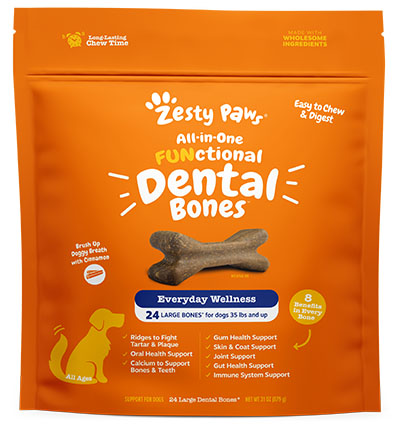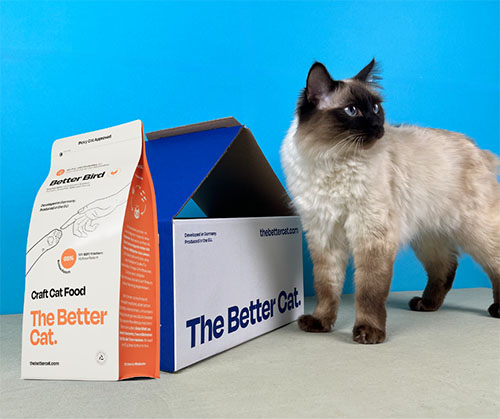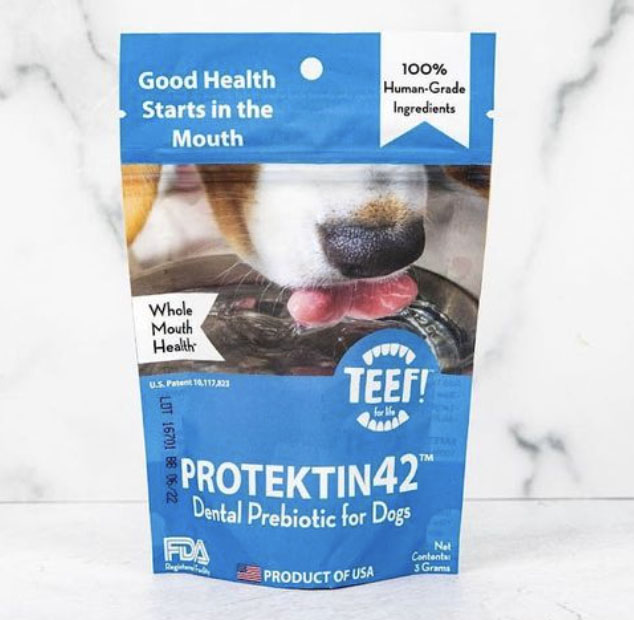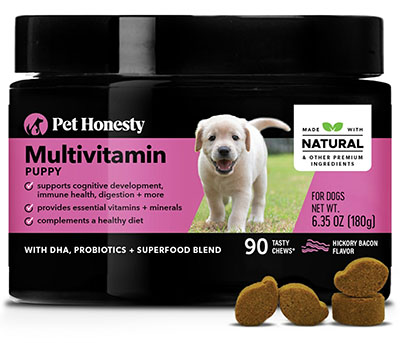This article was published in the March 2023 issue of Pet Food Processing. Read it and other articles from this issue in our March digital edition.
Trillions of bacteria inherently reside in the gastrointestinal system of living mammals. This microbial community — the microbiome — has distinct physio-chemical properties that help regulate an array of bodily functions. The microbiome may be improved by the consumption of probiotics, prebiotics and postbiotics, collectively known as biotics. Advancements in science show that cats and dogs can live better lives, and sometimes longer lives, when biotics are part of their diets.
When the microbiome is balanced, cats and dogs may experience everything from a boost in immunity to a healthier skin and coat to improved digestion, according to Danielle Bernal, global veterinarian with Wellness Pet Co., Tewksbury, Mass. When digestion is optimized, pets better absorb the nutrients in food, and this keeps them in top condition.
“A pet’s digestive health affects almost every aspect of their health and happiness and is the secret to helping every pet achieve a lifetime of well-being,” Bernal said.
Kami Grandeen, pet business manager – US, Alltech, Nicholasville, Ky., said, “A healthy gut is always a top priority for pet parents. It’s something that most pet parents monitor daily during a walk or picking up the backyard.”
With a growing number of people now having a better understanding of the association between nutrition and health, this knowledge is being transferred to their pets. It’s part of the humanization in pet food movement.
“As part of this growing knowledge, pet parents are becoming more educated about ‘biotics’ beyond probiotics, and are starting to realize that a high cell count alone doesn’t automatically indicate that a product is ‘good,’” said Julie Gasper, global portfolio manager, pet, aqua and equine, Cargill, Minneapolis. “Rather, it is one component that can deliver gut benefits, but other ingredients such as prebiotics, and now postbiotics, can provide additional and unique digestive health outcomes either in place of or in combination with probiotics.”

Zesty Paws All-In-One Functional Dental Bones contain Cargill’s proprietary EpiCor™ postbiotic ingredient. (Source: Zesty Paws)
Leah Lambrakis, vice president of research and development, nutrition and scientific affairs, Simmons Pet Food, Siloam Springs, Ark., said, “Many of the brands we produce for are interested in having a product line that is more ‘solutions’ based. Not necessarily a therapeutic product, but one that offers a nutritional aid for a specific health goal, such as ‘digestive care.’”
As part of its annual report on US pet supplement trends and consumer insights, MarketPlace, St. Louis, conducted a survey of pet parents in 2022 to better understand awareness, attitudes and behaviors related to the biotics category.
“We found that 22% of pet parents associate probiotics with positive health benefits for their pets,” said Jon Copeland, research strategist at MarketPlace. “In contrast, 7% said the same about prebiotics and only 3% for postbiotics. So, gut health is a promising space; however, because pre- and postbiotics are still emerging ingredients in pet foods and treats, brands must contend with low awareness and the need for consumer education.”
Gail Czarnecki-Maulden, senior research nutritionist, Nestlé Research Center, St. Louis, said, “Prebiotics, probiotics and postbiotics can each affect digestive and immune health, but in different ways. It is important to note that these three, as well as the many species and strains within each, are not interchangeable. As interest grows in this space, we must carefully study each of these areas to ensure they provide true benefits to pets in their final form — their food bowls.”
Probiotics gain traction
In 2020, 24% of pet parents in the US claimed to use probiotics for their pets. This number rose to 27% in 2022, according to research conducted by Chr. Hansen, Inc., Milwaukee, Wis. This demand is fueling innovation in the pet food and treat space through products pets consume every day, often eagerly.
“Wellness Pet Company includes scientifically proven digestive health inclusions into every dry recipe that we make,” Bernal said. “We don’t add them only to a ‘digestive recipe’ and exclude the other important life-stage or lifestyle-tailored recipes for pets. We firmly believe that every pet deserves optimal digestive health, so our technology is included into every recipe.

German pet food company The Better Cat launched last year with dry cat food formulated with pre- and probiotics. (Source: The Better Cat)
“We always include a fiber — a prebiotic — and probiotics into our dry recipes,” Bernal added. “It is never just one element because these ingredients always work better together. And, we guarantee our probiotics for the shelf life of our products. You can see this listed in the guaranteed analysis on the back of our packaging. This is how pet parents can know they are receiving a high-quality diet with probiotics.”
The packaging states: “Guaranteed probiotics (Enterococcus faecium, Bacillus coagulans, Lactobacillus delbrueckii, Streptococcus thermophilus, Bacillus licheniformis, Bacillus subtilis, Lactobacillus acidophilus, Lactobacillus casei).” The company applies these probiotics to the exterior of the dried kibble.
“Probiotics are live microorganisms and are more suitable for post-extrusion application in dry, air-dried, freeze-dried, baked, cold-molded products, chewables and dry toppers,” said Lidiia Alaverdova, DVM, head of global marketing-animal health and nutrition, pet portfolio manager at Chr. Hansen, Hørsholm, Denmark. “Many variables can impact probiotic viability and survivability, and those variables are best de-risked with application-specific trials in partnership with the probiotic manufacturer.”
Chr. Hansen offers a range of stable probiotic blends for every life stage. For example, the company has a probiotic that emphasizes immune and digestive support to help bolster the healthy development of growing pets.
“Another probiotic in our portfolio helps maintain digestive balance and normal health in adult pets, supporting everyday well-being,” Alaverdova said. “Lastly, we have a probiotic for senior dogs and cats over seven years old. This is a growing population of pets in the United States with particular needs.”
Marcial Guevara, global pet product management at Chr. Hansen, said, “We hand-picked the best Bacillus and Enterococcus strains from our proprietary collection of good bacteria based on over 100 in vitro studies, literature overviews and in vivo data from trials with other animal species. We carefully tested the combinations of these strains and formulated three- and four-strain blends with an organic carrier, using no gluten, soy, corn, lactose or animal-derived ingredients.”
A common probiotic included in pet foods is L. acidophilus, which has been shown to help increase the amount of healthy bacteria occurring naturally in the gut.
“E. faecium competes for resources that harmful bacteria would otherwise consume,” Grandeen said. “B. subtilis supports the production of beneficial enzymes in the gut. Bifidobacterium animalis multiplies in the gut and leaves less room for harmful bacteria.”
Purina uses B. coagulans due to its proven efficacy data in both cat and dog food to promote digestive and immune health, according to Czarnecki-Maulden. B. coagulans is a spore-forming probiotic. Such bacteria have a protective outer layer, which enables them to better survive food processing as well as the environment in a pet’s digestive tract.

TEEF for Life’s flagship product, Protektin42™, seeks to target the root cause of gum disease, cavities and bad breath in dogs and features “tummy-friendly” pre- and postbiotics. (Source: TEEF for Life)
“Almost all of our Diamond Pet Foods and Taste of the Wild dry formulas offer prebiotics derived from ingredients such as chicory root and beet pulp, and probiotics in the form of our proprietary K9 Strain and Viables Probiotics,” said Michele Sayles, Ph.D., executive director of food safety and quality, Diamond Pet Foods, Meta, Mo. “These probiotic blends are species-specific strains for dogs and cats that are sourced from their respective animal for the respective animal. Our proprietary probiotic blends include five separate bacteria strains, with each strain in the blend working with the others to support a healthy digestive and immune system.
“Our probiotics are powerful digestive aids that help break down food more efficiently, making the nutrients that might otherwise pass through the digestive system more readily available,” Sayles added. “The digestive tract can only interact with so many bacteria, so one of the goals of daily feeding of probiotics is to ensure that good bacteria are always available to exert their beneficial actions.”
With probiotics, stability during processing and storage is often a concern. Because probiotics are sensitive to processing, they are not well suited for wet foods as they likely won’t survive retort cooking. For probiotics to positively influence the microbiome, research must show they are efficacious at the time of consumption.
“To maintain a viable probiotic count, certain strains require refrigeration, making them suitable for raw food applications,” Copeland said. “In dry applications, probiotics are more tolerant to storage at room temperature.”
Prebiotics often accompany probiotics
Prebiotics are the fuel for healthy gut bacteria, those inherently present in mammals and those consumed in the form of added probiotics. That’s why many pet food formulators add both to their recipes.
“Many of our recipes include chicory root, which is a source of the prebiotic dietary fiber inulin,” said Natalie Asaro, nutrition manager, Petcurean, Chilliwack, British Columbia. “Studies have shown that dogs who eat foods containing prebiotics have higher levels of beneficial bacteria in their stool. Prebiotics have also been shown to improve regularity and stool quality.
“Some of our recipes also feature L. acidophilus and E. faecium,” Asaro added. “Our GO! SOLUTIONS DIGESTION + GUT HEALTH recipes contain a specialized blend of the B. coagulans, which is especially well suited to survive the canine and feline digestive tract, to support a healthy gut microbiome. These recipes also contain a unique prebiotic fiber blend of chicory root, psyllium husk, yeast extract, hydrolyzed yeast and brewers dried yeast, to support nutrient utilization and a healthy gut.”
Alltech’s prebiotic is isolated from a yeast cell wall, specifically the mannan-rich fraction. Not only does this support the growth of beneficial gut bacteria, but it’s been shown to reduce harmful bacteria, such as E. coli and Clostridia perfringens in the feces, according to Grandeen.
“Prebiotics, probiotics and postbiotics can each affect digestive and immune health, but in different ways,” said Gail Czarnecki-Maulden, Nestlé Research Center.
“Purina uses purified inulin, wheat aleurone and chicory root as prebiotics,” Czarnecki-Maulden said.
Purina has published numerous studies on chicory root, including the beneficial effects on the composition of fecal microflora, fecal quality and digestive health. In a nine-year study, 77% of cats fed prebiotics from chicory showed either an increase in Bifidobacteria and Lactobacilli, and/or decreases in C. perfringens. In the same study, cats that were fed a specific blend of nutrients that included a prebiotic lived an average of one year longer than cats fed a control diet.
The newest biotic
Postbiotics are an entirely new category of functional ingredients. They do away with the need to add probiotics and prebiotics by being the healthy metabolites that the microbiome produces, or the compounds that possess the actual health benefit. This includes an array of enzymes, peptides, organic acids, fatty acids and more.
“Our probiotics are powerful digestive aids that help break down food more efficiently,” said Michele Sayles, Ph.D., Diamond Pet Foods.
The International Scientific Association for Probiotics and Prebiotics (ISAPP) published a consensus definition on postbiotics at the end of 2020. The definition — a preparation of inanimate microorganisms and/or their components that confers a health benefit on the host — includes the word “preparation” because the inactivation process and matrix may play a role in the functionality of the microbial biomass that comprises the postbiotic. The term “inanimate” was specifically used in the definition, rather than more common terms such as inactive or inert, which may suggest being ineffective.
“Postbiotics are a great solution for any pet food or treat form because of their stable nature,” Gasper said. “The product remains effective even after harsh manufacturing conditions, like extrusion, retort or high-pressure processing.
“Our pet postbiotics are produced during a highly controlled fermentation process,” Gasper added. “The cells that remain after fermentation are completely inanimate and have been killed by thermal processing. All cells used in the fermentation process and all metabolites produced are used as part of the final postbiotic.”
Cargill’s postbiotic products have been researched extensively, with hundreds of animal studies and numerous human clinical trials resulting in peer-reviewed publications. Additional product research conducted specifically with dogs and cats confirms that Cargill postbiotics support immune strength, gut health and more in these species, according to Gasper.
H&H Group North America, with global headquarters in Hong Kong, now offers the new Zesty Paws line of training bites and dental bones. These treats contain Cargill’s EpiCor postbiotic, according to Yvethe Tyszka, vice president of marketing at H&H Group.
Alltech grows a postbiotic from L. acidophilus. The fermentation process for this postbiotic produces metabolites that are beneficial to pets, Grandeen said.
 Pet Honesty’s new pet health supplement for puppies is formulated with probiotics to support healthy digestion, as well as Omegas 3s for brain, heart and immune health. (Source: Pet Honesty)
Pet Honesty’s new pet health supplement for puppies is formulated with probiotics to support healthy digestion, as well as Omegas 3s for brain, heart and immune health. (Source: Pet Honesty)
Lallemand Animal Nutrition, Milwaukee, offers a range of yeast ingredients that fit ISAPP’s definition for postbiotics, according to Francesca Susca, Ph.D., global pet product manager. This includes yeast fractions, such as yeast cell walls, as well as whole inactivated yeast cells, also known as hydrolyzed yeast.
“YANG, which is the acronym for Yeast Association New Generation, is the only formulated yeast product on the yeast market,” Susca said. “It was developed by our research and development team after characterization of thousands of different yeast strains in order to select those with different but complementary activities.”
Patented YANG is made with three synergistic strains of yeast selected for their superior pathogen binding capacity as well as their wider and broader immunomodulation. The beneficial properties of YANG have been proven through in vivo and in vitro trials on the target species.
As stated previously, there remains an opportunity to educate consumers about biotic nutrition, including what a postbiotic is and what it isn’t. Helping pet owners understand these ingredients will in turn help them make more informed pet nutrition choices in today’s saturated market.
“It is not a single metabolite or compound like an organic acid or enzyme. Nor is it a vaccine, even though it does confer positive immune benefits,” Gasper said. “And, since a postbiotic by definition has an intentional step to deactivate the microbes utilized in its process, it is not a probiotic either. In the end, a postbiotic is a unique and enriched cocktail of hundreds of beneficial metabolites that, together, positively influence digestive, immune and vitality outcomes for dogs and cats.”
Keep up with the latest pet food trends on our Trends page.



